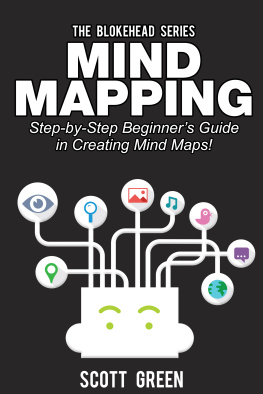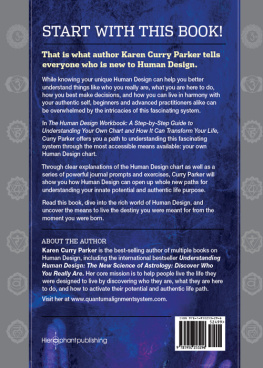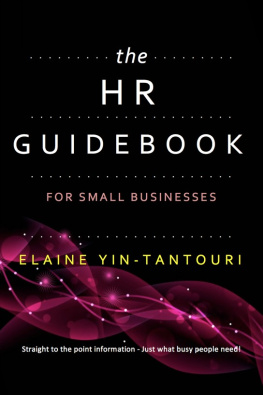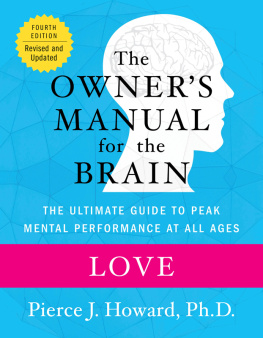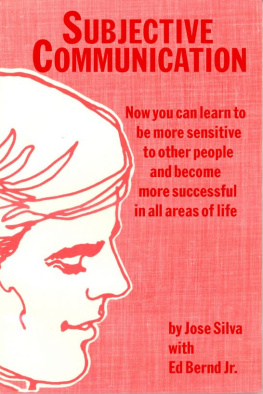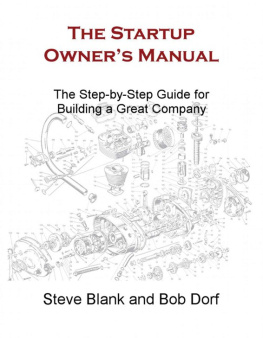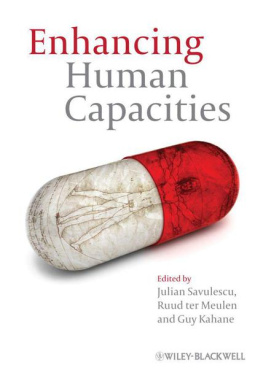All rights reserved. Published in the United States of America. No part of this book may be reproduced or transmitted in any form or by any means, graphic, electronic, or mechanical, including photocopying, recording, taping or by any information storage or retrieval system, without the permission in writing from the publisher.
This e-book edition published by SelectBooks, Inc.
For information address SelectBooks, Inc., New York, New York.
P REFACE
Everyone has inside himself a piece of good news! The good news is that you really dont know how great you can be, how much you can love, what you can accomplish, and what your potential is!
ANNE FRANK, teenage author (19291945)
Life is an artistic process. Whether we are aware of it or not, we sculpt ourselves with every thought, every behavior, every action. We hold extraordinary creative power within ourselves, yet many of us tend to harness only a fraction of this power. As a result our art only partly achieves its great purpose, that of bringing out the potential magnificence in ourselves, our relationships, and our world.
Imagine a husband and wife, both made of clay. Imagine that one day they scrape together some extra clay and begin to work at it. It is soft and malleable in their hands and quickly takes on recognizable shapes. A little clay body forms, then little clay arms and legs, even a little clay penis andpresto, its a little clay boy.
With great love and commitment, mom and dad mold in the boy their dreams of what he might become. Before long, little clay brothers, sisters, and friends come along. They too work at the boy, playing with him, challenging him, pushing and pulling at his form. Teachers appear along with aunts and uncles and neighbors and grandparents. All take turns working at the boy, sculpting in him that which they feel best suits him.
From time to time, when the clay boy has a moment to himself, he wonders about what he is becoming. He enjoys the moments of quiet, free from the constant poking and prodding at his being. He lies in the grass and watches the clouds roll by, fascinated by how mysteriously their forms shift as they cross the sky.
As the days and months pass, the boy finds himself subject to an increasing number of elements in the world around himelements like peer pressure, grades, television, marketing campaigns, and scary questions like What are you going to be when you grow up? Weathered by these and other forces, the clay boy begins to harden.
One day he finds himself feeling rather fixed and inflexible. Fearing that his formation is nearly complete he looks to the clouds, asking, Is this what Im supposed to be? The clouds drift by, shifting their forms, seemingly indifferent to his concerns.
Not long after the experience he falls in love with a young woman. They marry and soon create a little clay girl of their own. This new, soft little bundle of love fills his heart to the brim. Any worries about his own form are instantly put to rest. He silently promises to sculpt in his daughter all the things he wishes that someone might have sculpted in him.
Years pass, joyous years, during which the spontaneity and enthusiasm of youth begin to call upon him once again. He eventually begins to wonder:
What if I am like the clouds?
What if I can change my form at any time?
But how?
How does one shape ones self?
In a swell of inspiration he goes to the store and buys a bunch of self-help books, each of which offers some useful tips. He finds a therapist who, by exploring the elements that caused his hardening, helps him to recover some of his softness of form, his youthful flexibility. Then, at forty years of age, he finds himself at the start of a new life.
Sadly, he notices that his sixteen-year-old daughter is now harder than he. There in her form he sees so many qualities of his old self, qualities that he had molded in her. He tries to share his new tools with her. He tries to share his therapist with her, but his daughter turns him away in resentment about all her years at the hands of other sculptors, and for the unacknowledged pain that this creative manipulation has brought on. In an impassioned grab at self-expression and individuation the girl begins to acquire a series of unusual body piercings.
One night beneath the stars as he lies in the grass beside his wife, the clay man thinks to himself:
What if our child had held the tools of self-development
when she was soft and young?
What if she had learned to masterfully sculpt her own being?
What self might she have created?
And would that self include so many piercings?
We are all born with the tools of our own sculpting innately hardwired within us. Yet we are raised in a society that teaches us to be overly dependent upon peers, parents, teachers, politicians, counselors, medications, media, a host of commercial products, and other external factors. Many of us pass through the prime years of our development without ever really learning to use the intrinsic tools of personal development.
Whether you dance, draw, make music, shoot field goals, build houses, tune engines, or sit around all day watching television, you are an artist. Your single greatest work of art is your self . As with any art form, the more you understand and develop your talents, the more empowered and masterful you become as an artist. This is particularly important when engaging in the art of consciously shaping your own life.
The Users Guide to Being Human examines eight of our greatest inner capacities as artists, those underlying talents that drive our personal growth each day. Compiling thousands of years of human inquiry into the nature of learning and development, this work aims to help each of us understand and make use of the tools that are freely available within us.
Imagine a coming of age ceremony where a teenage girlaccomplished in using the tools of her ongoing personal developmenttakes over as head craftsman of her self, celebrating the end of a long apprenticeship, the end of childhood. Imagine a world where everyone consciously makes art of themselves each and every day by continually crafting themselves into greater quality works. Imagine families and communities of artists openly sharing their tools and techniques with one another.
What might that world look like?
A CKNOWLEDGMENTS
One must find ones own voice, while acknowledging that, in the oralist context, voice is never really exclusively ones own.
It is equally shared by others who have informed or inspired it.
GRACE NONO, contemporary musician and culture bearer
Many thanks to those who supported the creation and publication of this book, including Steve Traum, Dr. Maria Schmeeckle, Julie Dubow, Richard Dickson, David Pollock, Sue Bryan, Danielle Zucker, kate Sage, Sally Rosloff, Cooper Zale, Heather Ashton, kirk Ward and Tracy David. Additional thanks to the many teachers, students, colleagues, friends, family members, and world citizens I have had the privilege of knowingeach of whom has in some way helped to shape this work.







